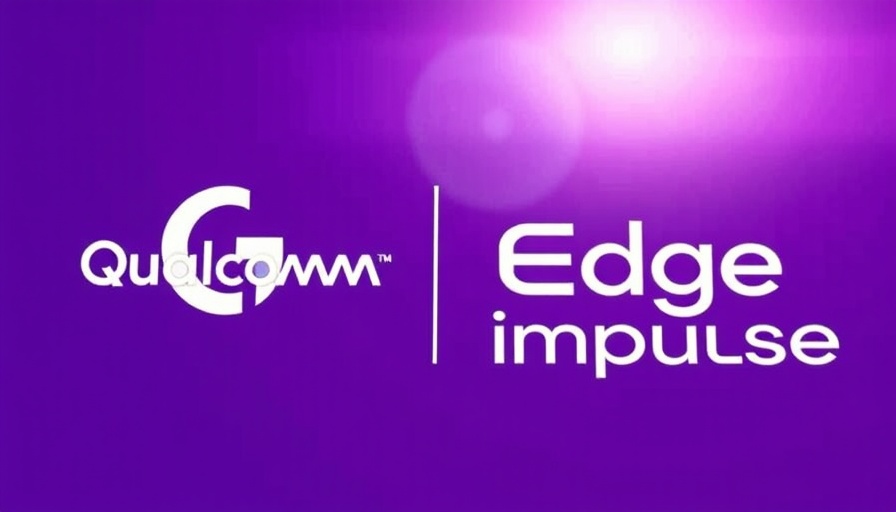
Qualcomm’s Bold Move to Amplify Edge AI with Edge Impulse
In a strategic acquisition move, Qualcomm has acquired Edge Impulse, an AI platform designed to facilitate developers in harnessing machine learning in edge devices. This acquisition, announced on March 10, 2025, highlights Qualcomm’s commitment to bolstering its AI capabilities, particularly within its Dragonwing line of AI-powered chips.
Transforming the Landscape of AI and IoT
Nakul Duggal, Qualcomm's head of IoT, expressed that this purchase aims to enhance the operational capabilities across critical sectors including retail, security, energy, and supply chain management. This aligns with Qualcomm’s strategy to expand its leadership in the Internet of Things (IoT) landscape, implementing integrated solutions tailored for industry-specific needs.
Bridging Gaps in Edge AI Development
Founded in 2019 by Zach Shelby and Jan Jongboom, Edge Impulse has attracted significant attention for simplifying the creation and deployment of machine learning models on microcontrollers and small devices. The platform automates data collection, optimizes model training, and enables quick deployment, thereby empowering developers to innovate without the traditional complexities of AI integration.
Market Demand for AI in Edge Devices
The necessity for effective AI in edge devices is burgeoning as industries strive for automation and real-time data processing. The widespread adoption of AI in IoT applications enhances operational efficiency and decision-making. Qualcomm’s acquisition comes at a crucial time, aiming to fortify its stack of AI solutions and develop smarter embedded devices capable of real-time analytics.
A Look Ahead: Opportunities in the IoT Ecosystem
Looking forward, the synergy between Qualcomm and Edge Impulse suggests promising advancements in embedded machine learning that will impact numerous sectors. As Qualcomm integrates this technology, it may redefine current limitations in processing power and operational agility, paving the way for more sophisticated and responsive AI-enabled solutions in everyday devices.
With over 170,000 developers leveraging Edge Impulse’s platform, the landscape of AI in IoT and edge devices is set to expand significantly. As Zach Shelby noted, the acquisition allows them to enhance their capabilities while retaining their unique identity within Qualcomm’s vast ecosystem.



Write A Comment